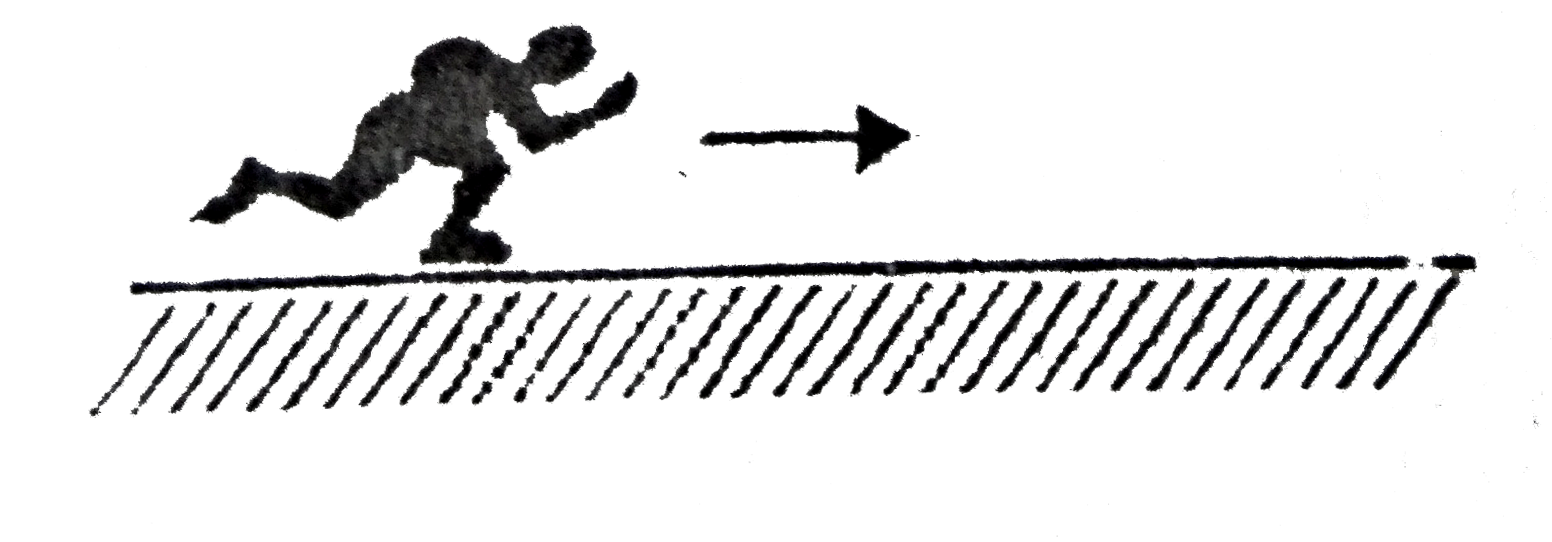Following are three equations of motion
S(g)=ut+12at2v(s)=√u2+2asv(t)=u+at
Where ,S,u,t,a,v are respectively the displacement ( dependent variable ), initial ( constant ), time taken ( independent variable ), acceleration ( constant ) and final velocity ( dependent variable ) of the particel after time t.
Find the displacement of a particle after 10 seconds starting from rest with a uniform acceleration of 2m/s2
10m
100m
50m
200m
The correct Answer is:B
To find the displacement of a particle after 10 seconds starting from rest with a uniform acceleration of 2m/s2, we will use the first equation of motion:
S=ut+12at2
1. Identify the given values:
- Initial velocity (u) = 0 (since the particle starts from rest)
- Time taken (t) = 10 seconds
- Acceleration (a) = 2m/s2
2. Substitute the values into the equation:
S=ut+12at2
Substituting the known values:
S=(0)(10)+12(2)(102)
3. Calculate the first term:
(0)(10)=0
4. Calculate the second term:
12(2)(102)=12(2)(100)=1×100=100
5. Combine the results:
S=0+100=100meters
Final Result:
The displacement of the particle after 10 seconds is 100meters.
---
- Initial velocity (u) = 0 (since the particle starts from rest)
- Time taken (t) = 10 seconds
- Acceleration (a) = 2m/s2
S=ut+12at2
Substituting the known values:
S=(0)(10)+12(2)(102)
(0)(10)=0
12(2)(102)=12(2)(100)=1×100=100
S=0+100=100meters
The displacement of the particle after 10 seconds is 100meters.
Topper's Solved these Questions
- DAILY PRACTICE PROBLEMSBook:RESONANCE ENGLISHChapter:DAILY PRACTICE PROBLEMSExercise:dpp 2 PHYSICS
Explore 1 Video
- DAILY PRACTICE PROBLEMSBook:RESONANCE ENGLISHChapter:DAILY PRACTICE PROBLEMSExercise:DPP NO. 5 Physics
Explore 6 Videos
- CURRENT ELECTRICITYBook:RESONANCE ENGLISHChapter:CURRENT ELECTRICITYExercise:Exercise
Explore 53 Videos
- ELASTICITY AND VISCOCITYBook:RESONANCE ENGLISHChapter:ELASTICITY AND VISCOCITYExercise:Advanced Level Problems
Explore 9 Videos
Similar Questions
Following are three equations of motion
S(g)=ut+12at2v(s)=√u2+2asv(t)=u+at
Where ,S,u,t,a,v are respectively the displacement ( dependent variable ), initial ( constant ), time taken ( independent variable ), acceleration ( constant ) and final velocity ( dependent variable ) of the particel after time t.
Find the velocity of a particle after 10 seconds if its acceleration is zero in interval (0 to 10s)
View SolutionFollowing are three equations of motion
S(g)=ut+12at2v(s)=√u2+2asv(t)=u+at
Where ,S,u,t,a,v are respectively the displacement ( dependent variable ), initial ( constant ), time taken ( independent variable ), acceleration ( constant ) and final velocity ( dependent variable ) of the particel after time t.
Find the displacement of the particle when its velocity becomes 10m/s if acceleration is 5m/s2 all through -
View SolutionIf acceleration a(t)=3t2 and initial velocity u=0 m/s , then the velocity of the particle after time t=4 s
View SolutionVelocity of a particle varies with time as v=4t. Calculate the displacement of particle between t=2 to t=4 sec.
View SolutionIf a=(3t2+2t+1) ms2 is the expression according to which the acceleration of a particle varies. Then-
Find displacement of the particle after 2 seconds of start.
View SolutionIf a=(3t2+2t+1) ms2 is the expression according to which the acceleration of a particle varies. Then-
Q. Find displacement of the particle after 2 seconds of start.
View SolutionA particle having initial velocity u moves with a constant acceleration a for a time t. a. Find the displacement of the particle in the last 1 second . b. Evaluate it for u=5m/s,a=2m/s2andt=10s.
View SolutionVelocity of a particle at any time t is v=(2ˆi+2tˆj)m/s. Find acceleration and displacement of particle at t=1s. Can we apply v=u+at or not?
View SolutionIf a man has a velocity varying with time given as v=3t2,v is in m/s and t in sec then :

Find out his displacement after 2 seconds of his start :
View SolutionIf a man has a velocity varying with time given as v=3t2,v is in m/s and t in sec then :

Find out his displacement after 2 seconds of his start :
View Solution

